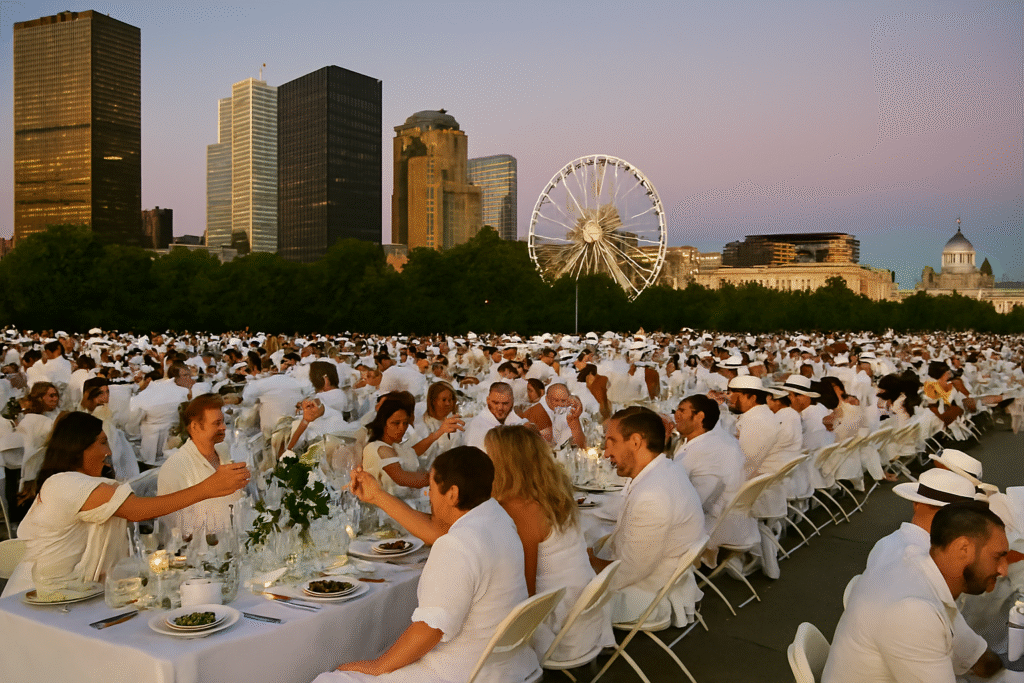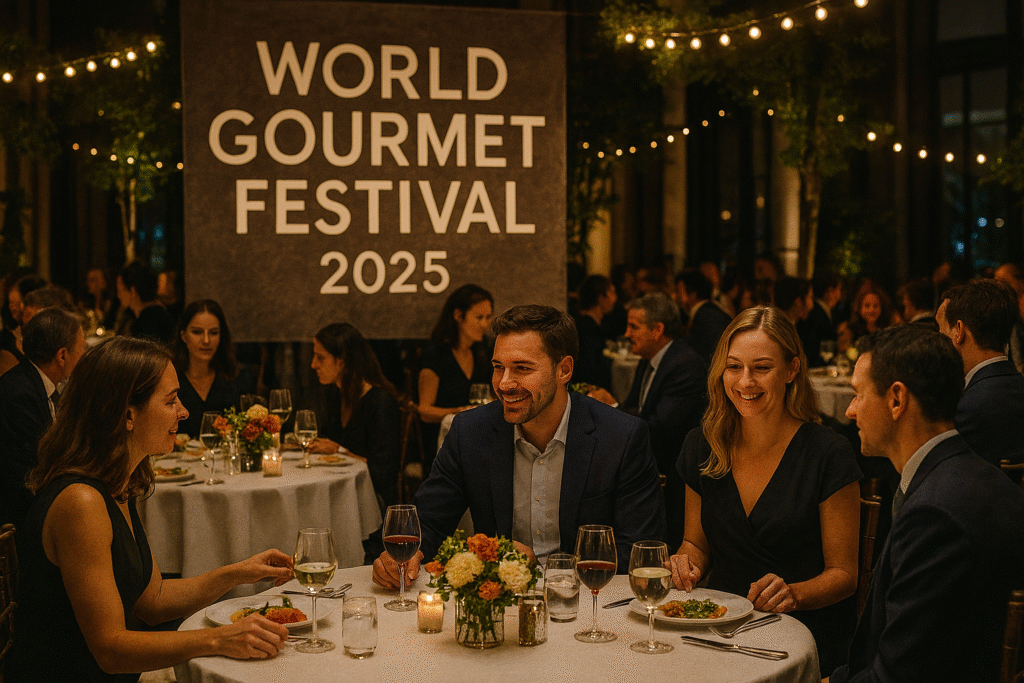Table of Contents
- Introduction
- History of the Global All-White Picnic
- What Happens at the Event
- How to Participate
- Frequently Asked Questions
Introduction
Le Dîner en Blanc is a world-renowned all-white pop-up picnic that transforms cities into elegant dining and cultural experiences. Guests dressed in white gather at secret locations to enjoy gourmet meals, music, and dancing while celebrating community and style. This iconic event encourages social connection and creativity. Whether attending for the first time or as a returning participant, Le Dîner en Blanc offers a unique opportunity to experience a global cultural event.
History of the Global All-White Picnic
The first Le Dîner en Blanc was held in Paris in 1988 by François Pasquier, who invited friends for a white-themed picnic. Today, the event spans over 90 cities worldwide, including New York, Chicago, and Singapore (Wikipedia). Thousands of participants annually enjoy this exclusive cultural gathering, making it one of the most recognized pop-up picnics globally. For more details on the event’s history, visit the official Le Dîner en Blanc website.
What Happens at the Event
At a pop-up picnic, attendees can expect:
- Secret Locations: The venue is revealed shortly before the event.
- Elegant Attire: Guests wear all-white outfits and accessories.
- Gourmet Dining: Participants bring tables, chairs, and meals.
- Entertainment: Music, dancing, and occasional performances.
- Community Spirit: The event fosters connections and shared experiences.
For related experiences, see the guide to global pop-up gatherings.
How to Participate
- Register through the official Le Dîner en Blanc website.
- Receive an Invitation: Priority access is often for returning attendees.
- Prepare: Bring a white table, chairs, and a gourmet meal.
- Arrive: Follow instructions to set up at the secret location.
Frequently Asked Questions
Q: Can I attend without an invitation?
A: Most events are invite-only, but some cities maintain waiting lists (Axios coverage).
Q: What if it rains?
A: The event proceeds rain or shine; bring clear or white rain gear.
Q: Is alcohol allowed?
A: Policies vary by location; some events offer wine or champagne for purchase.
Q: How should I dress?
A: Guests must wear all white, including accessories and shoes.
This comprehensive global cuisine FAQ covers everything about Asian and Western food and drinks. Whether you’re exploring international cooking techniques or discovering new flavors, this global cuisine FAQ answers the most frequently asked questions about world food traditions, ingredients, and culinary practices from both Eastern and Western cultures.
Global Cuisine FAQ: Asian & Western Food & Drinks
Food reveals cultural contrasts in clear and delicious ways. From cooking methods to dining customs, Asian and Western cuisines showcase unique traditions while also offering fascinating overlaps. Below, you’ll find answers to the most common questions about these culinary worlds.
Understanding Core Differences in Cuisine
1. What distinguishes Asian and Western culinary traditions?
Asian meals often rely on rice or noodles as a foundation. Flavors usually come from soy sauce, ginger, garlic, and a wide variety of spices. Meanwhile, Western gastronomy emphasizes bread, potatoes, and pasta. Dairy plays a key role, with butter, cream, and cheese giving richness to many dishes. Herbs such as rosemary and thyme highlight European cooking. These contrasts create distinct dining habits and flavor profiles.
2. Are Asian dishes always spicy?
No, not at all. While cuisines from Thailand and parts of India feature bold use of chilies, not every dish follows this pattern. Japanese sushi, Chinese dim sum, and Korean bulgogi are mild examples. In fact, Asian cuisines range from fiery to delicate, showcasing a rich palette of flavor.
Western Breakfast Staples and Comfort Foods
1. What constitutes typical Western morning meals?
Western breakfasts often include eggs, bacon, and toast. Pancakes, waffles, and cereal are also popular choices. These hearty starts are usually enjoyed with coffee, tea, or juice, providing both energy and comfort.
2. What represents popular Western comfort foods?
Comfort foods in the West speak to nostalgia and indulgence. Creamy macaroni and cheese, pizza, and hearty casseroles are favorites. Similarly, burgers and fried chicken have wide appeal. Because they are warm, filling, and familiar, these dishes strongly connect to emotion.
Cultural Dining Practices
1. Do all Asian cultures employ chopsticks?
No. Chopsticks dominate in East Asia—China, Japan, and Korea. However, Southeast Asia prefers spoons and forks, while India and parts of the Middle East often use flatbreads or hands. This diversity highlights how food customs closely reflect culture.
2. Why are some Asian foods fermented?
Fermentation preserves food while also enhancing nutrition and flavor. Korean kimchi, Japanese miso, and Indonesian tempeh show how tradition meets health benefits. These foods are valued not only for taste but also for their role in well-being.
Common Western Beverages
1. What beverages are common with Western meals?
Western dining often features water, soda, or fresh juice. Alcohol also has a strong cultural connection, with wine served at European dinners and beer central in North America. In the southern United States, sweet iced tea is a staple.
Dietary Flexibility and Options
1. Can one discover plant-based options easily?
Yes. Asian cuisines offer tofu stir-fries, lentil dals, and vegetable curries that are naturally vegetarian. Western food, similarly, embraces plant-based eating. Salads, vegetarian pastas, and vegan burgers have grown popular, making meat-free dining accessible worldwide.
Unique Asian Drinks to Explore
1. What are some unique Asian beverages?
Asia provides a wide variety of distinctive drinks. Bubble tea, from Taiwan, combines tea with chewy tapioca pearls. Japanese sake, made from rice, holds deep cultural meaning. Strong Vietnamese iced coffee, sweetened with condensed milk, adds a bold twist compared to Western brews.
Portion Sizes and Dining Habits
1. How do portion sizes compare?
Western meals often emphasize large servings, reflecting abundance. By contrast, Asian meals are usually smaller yet balanced, encouraging sharing and mindful eating. This creates different social experiences around the table.
The Art of Fusion Cuisine
1. Is it feasible to integrate Asian and Western flavors?
Absolutely. Fusion cuisine blends traditions in creative ways. For instance, teriyaki burgers combine Japanese flavors with American fast food, while kimchi tacos bring Korean spice to Mexican street food. These playful mixes show how food bridges cultures.



